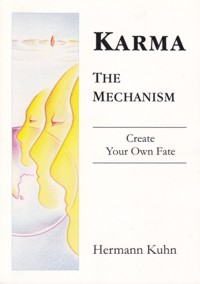
Adyam samrambha samarambharambha yoga krita karita numata kasaya vishesais tristristrish chatush chaikashah (8)
The karmic effects of actions originating within our consciousness are shaped by the following factors: Whether we- only decide to act
- actually prepare for the action (e.g. by collecting materials etc.) or
- physically begin with the action.
- we ourselves carry out the act
- others carry out the act as a result of our instigation or
- we only silently assent to the act (without taking any further part in it).
We attract and bind karma not only when we physically perform an action, but also when we provoke an action, when we indirectly participate in it, prepare for it and also when we only give our silent assent.
The deeper and more directly we immerse ourselves in an action, the more intense and long-lasting will be the character of the karma we bind. The less we engage in an action, the milder and shorter will be its karmic effects.
Yet this does not mean that karma will manifest with less intensity, the further away we are from the physical execution of an action. The passionate instigation (ordering, prompting, causing, sanctioning etc.) of an action or any gloating assent may lead to far more intense karmic effects than the comparatively uninvolved physical execution by a subordinate. The intensity of the karma we bind corresponds directly to the intensity of our own inner engagement, irrespective if our involvement is direct, indirect or only silently assenting.
Whether we use our body, speech or mind for an action determines the area of life the newly acquired karma will influence. An unchecked tendency for quarreling e.g. attracts a type of karma[13] that shapes the physiognomy of the acting person according to his or her brawling disposition. This effect is quite evident in the face and bearing of many persons with this kind of temper right in their present life. Positive examples of this karmic effect are persons who radiate equanimity and inner peace and whose mere presence is often sufficient to quieten quarrels. Their solid peaceful attitude usually shows clearly in face and bearing.[14]
We intensify karmic effects not only when we are motivated by the four main negative emotions, but also by the power we put behind our anger, arrogance, deceitfulness and greed. We manifest these emotions in four intensities:
- The highest intensity manifests as bouts of blind rage, aloof arrogance, insatiable greed and malicious deceit. As long as we permit our life to be governed by emotions of this intensity at one time or the other, we never leave the first stage of development (gunasthana) - the state of illusion, error and flawed understanding of the mechanisms of this world. As long as we don't actively search out and pursue opportunities for further development, our stay in this stage will be endless. The Tattvarthasutra compares the karmic effects of this intensity of negative emotions with the permanence of a line carved in rock.
- The second intensity is felt as strong negative emotions that do not totally overshadow us any more. Yet passionate emotions of this strength waste our vigor and attention on narrow topics that restrict the scope of our life. We thus lack the energy needed for reaching the fifth stage of development. This second intensity also prevents us from recognizing that the power of the Five Freedoms accelerates our development. Its effect is compared to a line drawn in earth.
- The third, moderate intensity is mild in comparison to the two previous forms, yet it nevertheless keeps our awareness fixed on egoistic, limiting themes of life. It prevents us from entering the sixth stage of development. This bars us from experiencing the emotional sovereignty, serenity and the vividness of the present that characterizes stage six. The third intensity also blocks us from feeling the full power of the Five Freedoms. Yet its effect is as fleeting as a line drawn in dust.
- The fourth and mildest intensity prevents access to the tenth stage of development. The effect of this intensity leaves as little impression as a line in water.
Karmas caused by the three milder intensities may become active in higher stages of development only. These mechanisms are described in '14 Stages of Development'.
All karmic patterns mentioned in this sutra arise in our consciousness. By changing the way we use our consciousness, we automatically influence these karmic patterns as well.
 Hermann Kuhn
Hermann Kuhn
